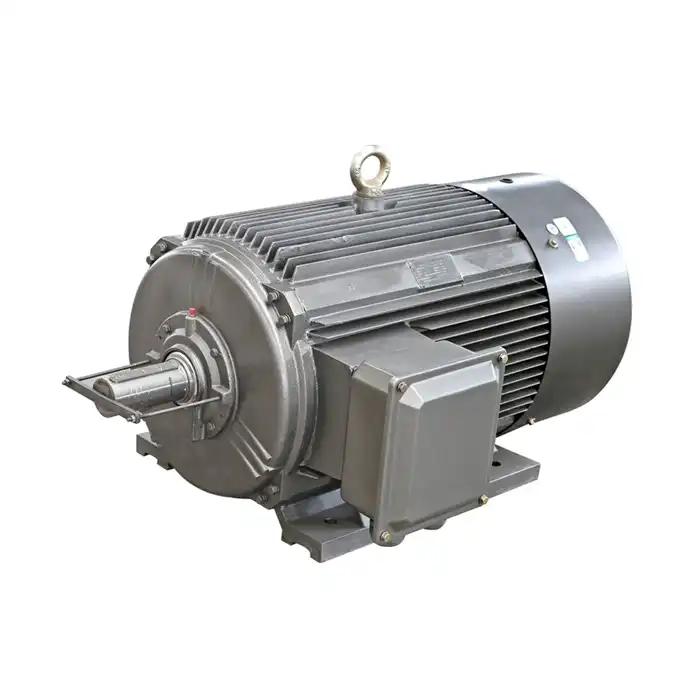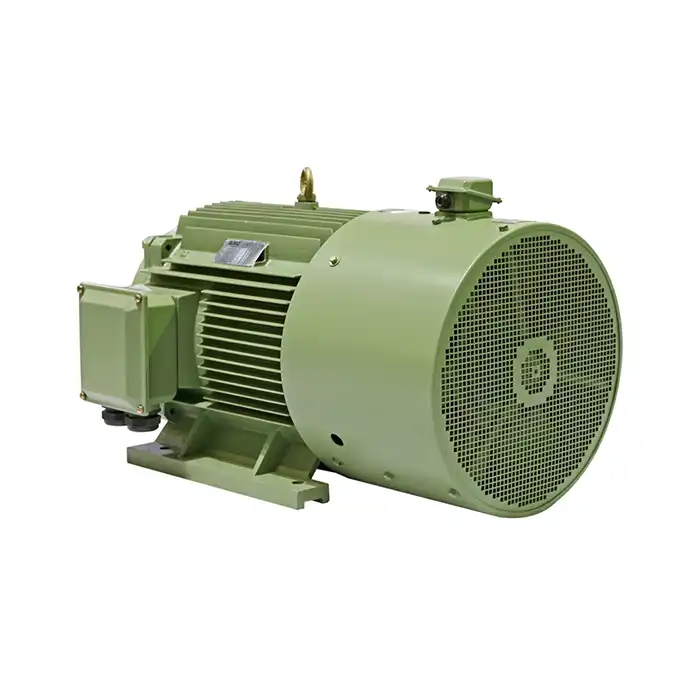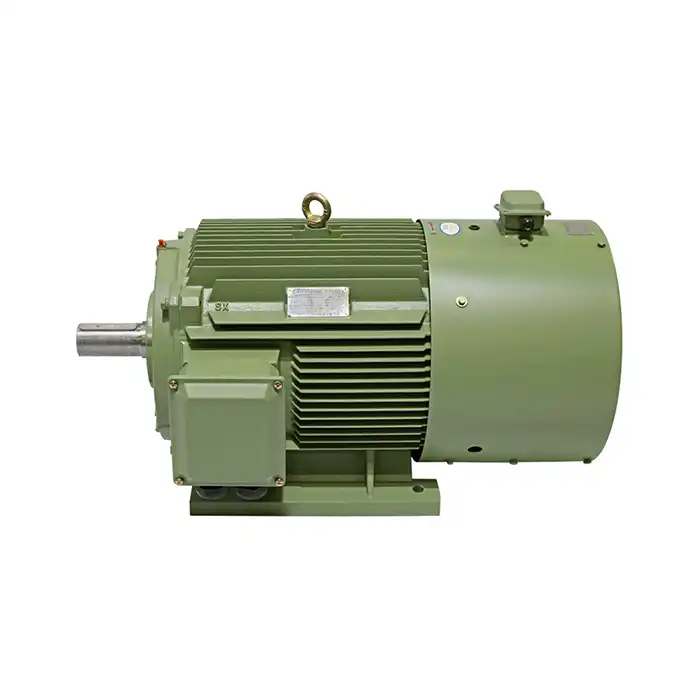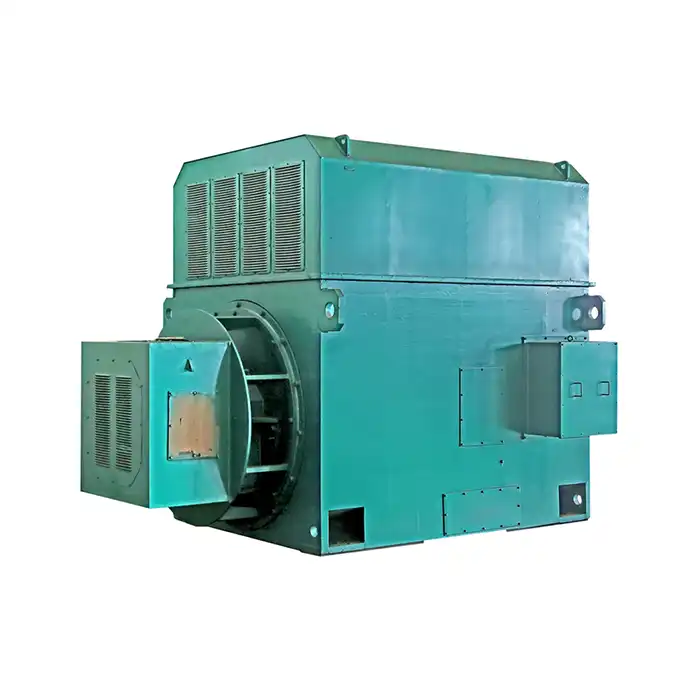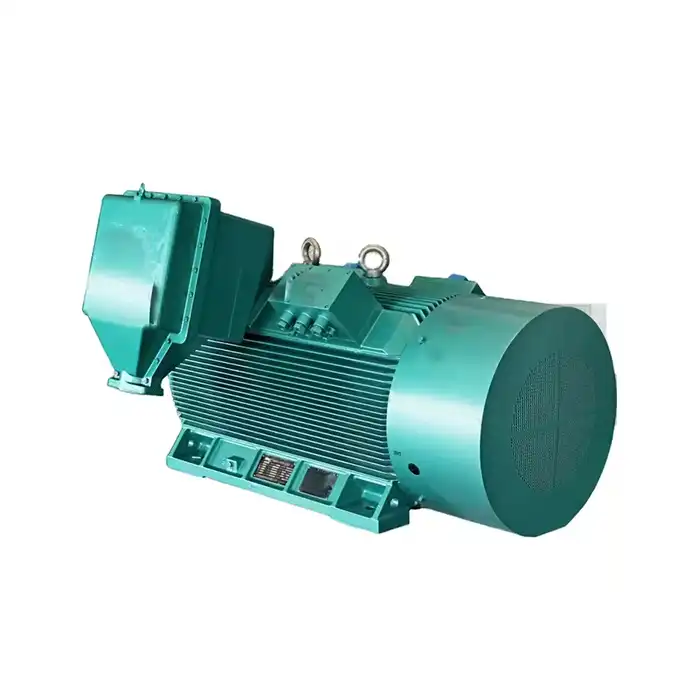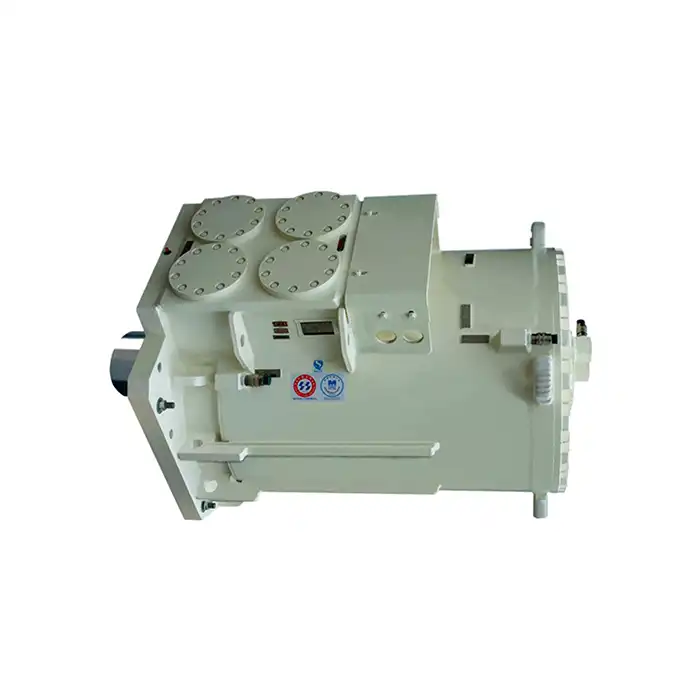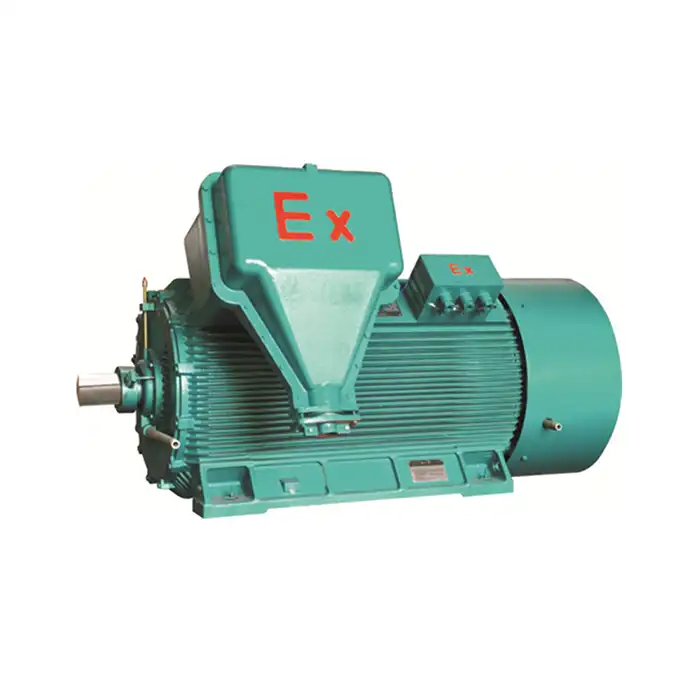How Does Armature Winding Configuration Affect Z2 DC Motor Performance?
The armature winding configuration plays a crucial role in determining the performance characteristics of Z2 DC motors. These versatile motors, with frame numbers ranging from 11 to 112, are widely used in various industrial applications, including metal cutting machine tools, papermaking, dyeing and weaving, printing, and cement production. Understanding the impact of armature winding configuration on motor performance is essential for optimizing efficiency and power output in different operational contexts.
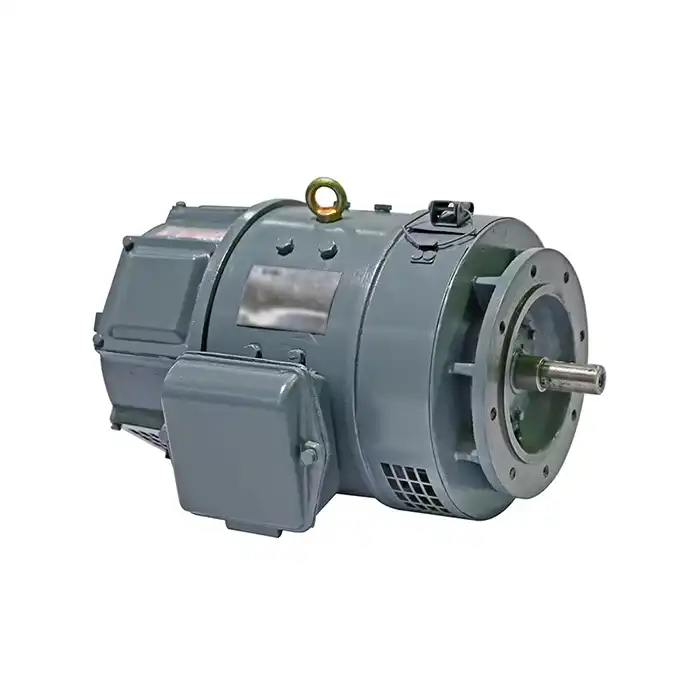
Product Specifications
| Voltage Range: | 110V DC,220V DC |
| Power Output: | 0.8kW to 200kW |
| Speed Range: | 500 to 3000 RPM |
| Insulation Class: | F (155°C) |
| Protection Class: | IP23 |
| Cooling System: | IC01 |
In this comprehensive guide, we'll examine the intricacies of armature winding configurations and their effects on Z2 DC motor performance. We'll discuss the differences between lap and wave windings, explore how winding pitch influences motor efficiency, and identify optimal configurations for high-torque applications.
What's the difference between lap and wave winding in Z2 motors?
Lap and wave windings are two fundamental armature winding configurations used in Z2 DC motors. Each type has distinct characteristics that affect motor performance, efficiency, and suitability for specific applications.
Lap Winding: Characteristics and Advantages
Lap winding is characterized by its parallel paths through the armature. In this configuration, the end of each coil is connected to the beginning of an adjacent coil, forming a lap or loop. The number of parallel paths in a lap winding is equal to the number of pole pairs in the motor.
Advantages of lap winding in Z2 motors include:
- Lower voltage and higher current capacity
- Improved commutation, resulting in reduced sparking
- Better suited for low-voltage, high-current applications
- Enhanced performance in motors with a large number of poles
Wave Winding: Features and Benefits
Wave winding, also known as series winding, is characterized by its series connection of armature coils. In this configuration, the end of one coil is connected to the beginning of another coil under a different pair of poles, creating a wave-like pattern.
Benefits of wave winding in Z2 DC motors include:
- Higher voltage and lower current capacity
- Reduced armature reaction, leading to improved commutation
- Better suited for high-voltage, low-current applications
- Improved performance in motors with a small number of poles
Choosing Between Lap and Wave Winding
The selection between lap and wave winding for Z2 DC motors depends on various factors, including:
- Voltage and current requirements of the application
- Number of poles in the motor
- Desired speed and torque characteristics
- Commutation requirements
For applications requiring high current and low voltage, such as in metal cutting machine tools, lap winding may be preferred. Conversely, wave winding might be more suitable for applications demanding high voltage and low current, like in certain cement production processes.
How does armature winding pitch impact Z2 motor efficiency?
Armature winding pitch is a critical factor that influences the efficiency and performance of Z2 DC motors. The winding pitch refers to the span between the two sides of a coil, measured in terms of armature slots.
Full-Pitch Winding
In full-pitch winding, the span between the two sides of a coil is equal to the pole pitch of the motor. This configuration offers several advantages:
- Maximum induced EMF in the armature conductors
- Highest torque production per ampere of armature current
- Simplicity in winding design and manufacturing
However, full-pitch winding may lead to increased harmonics in the air gap flux distribution, potentially affecting motor performance and efficiency.
Short-Pitch (Fractional-Pitch) Winding
Short-pitch winding involves reducing the span between the two sides of a coil to less than the pole pitch. This configuration offers several benefits for Z2 DC motor efficiency:
- Reduced harmonic content in the air gap flux distribution
- Improved waveform of the induced EMF
- Shorter end connections, resulting in reduced copper losses
- Enhanced commutation characteristics
The optimal short-pitch ratio depends on the specific motor design and application requirements. Common short-pitch ratios range from 5/6 to 11/12 of the full pitch.
Impact on Motor Efficiency
The choice of winding pitch significantly affects Z2 DC motor efficiency through various mechanisms:
- Copper Losses: Short-pitch winding can reduce end winding length, decreasing overall copper losses and improving efficiency.
- Iron Losses: By reducing harmonic content, short-pitch winding can minimize iron losses in the motor core.
- Commutation: Improved commutation in short-pitch windings can lead to reduced sparking and brush wear, enhancing overall motor efficiency and lifespan.
- Power Factor: Short-pitch winding can improve the power factor of the motor, leading to better overall system efficiency.
When selecting the appropriate winding pitch for Z2 DC motors in applications such as papermaking or dyeing and weaving, it's essential to balance these factors against the specific requirements of the application, including torque characteristics, speed range, and environmental conditions.
Optimal winding configurations for high-torque Z2 motor applications
High-torque applications, such as those found in metal cutting machine tools or certain cement production processes, require careful consideration of armature winding configurations to maximize Z2 DC motor performance. Several winding strategies can be employed to enhance torque production while maintaining efficiency and reliability.
Double-Layer Lap Winding
Double-layer lap winding is a popular choice for high-torque Z2 DC motor applications due to its ability to handle high currents and provide excellent commutation characteristics. This configuration offers several advantages:
- Increased current-carrying capacity
- Improved heat dissipation
- Enhanced commutation due to reduced armature reaction
- Greater flexibility in coil span selection
The double-layer structure allows for better utilization of the slot area, resulting in higher torque density and improved overall motor performance.
Concentrated Winding
Concentrated winding, where each coil is wound around a single tooth, can be beneficial in high-torque Z2 DC motor applications. This configuration offers:
- Reduced end winding length, leading to lower copper losses
- Improved slot fill factor, resulting in higher torque density
- Enhanced thermal performance due to better heat dissipation
- Simplified manufacturing process
While concentrated winding may introduce higher harmonic content in the air gap flux distribution, careful design can mitigate these effects and maintain high efficiency.
Optimized Short-Pitch Winding
For high-torque applications, an optimized short-pitch winding configuration can provide a balance between torque production and efficiency. Key considerations include:
- Selection of an appropriate pitch ratio (e.g., 5/6 or 11/12) to minimize harmonics while maintaining high torque production
- Use of a higher number of slots per pole to improve the winding distribution factor
- Implementation of coil grouping techniques to enhance torque characteristics
By fine-tuning the short-pitch ratio and slot-pole combination, it's possible to achieve optimal torque production while minimizing losses and improving overall motor efficiency.
Hybrid Winding Configurations
In some high-torque Z2 DC motor applications, hybrid winding configurations combining elements of different winding types may provide superior performance. Examples include:
- Lap-wave hybrid windings, which combine the advantages of both lap and wave windings
- Mixed short-pitch and full-pitch windings to balance torque production and harmonic reduction
- Asymmetrical winding designs to optimize torque characteristics for specific operational requirements
These hybrid configurations require careful design and analysis to ensure optimal performance in high-torque applications.
Considerations for High-Torque Applications
When selecting the optimal winding configuration for high-torque Z2 DC motor applications, several factors should be considered:
- Thermal management: Ensure adequate heat dissipation to prevent overheating during high-torque operations.
- Commutation requirements: Consider the impact of winding configuration on commutation quality and brush wear.
- Speed range: Evaluate the torque-speed characteristics of different winding configurations across the required operational range.
- Manufacturing complexity: Balance performance gains against increased production costs and complexity.
- Efficiency requirements: Consider the overall system efficiency, including power electronics and mechanical components.
By carefully evaluating these factors and selecting the appropriate winding configuration, it's possible to optimize Z2 DC motor performance for high-torque applications in industries such as metal cutting, papermaking, and cement production.
Conclusion
The armature winding configuration plays a crucial role in determining the performance characteristics of Z2 DC motors. By understanding the differences between lap and wave windings, the impact of winding pitch on efficiency, and the optimal configurations for high-torque applications, engineers and manufacturers can make informed decisions to maximize motor performance in various industrial settings.
As technology continues to advance, ongoing research and development in armature winding configurations will likely lead to further improvements in Z2 DC motor efficiency, torque production, and overall performance. Staying informed about these developments is essential for professionals working with electric motors in industrial applications.
If you're looking for high-performance Z2 DC motors with optimized armature winding configurations for your industrial applications, look no further than Shaanxi Qihe Xicheng Electromechanical Equipment Co., Ltd. Our team of experts specializes in providing power equipment solutions tailored to the unique needs of various industries, including manufacturing, process control, HVAC, energy, and utilities.
We offer Z2 DC motors with power outputs ranging from 0.8kW to 200kW, suitable for a wide range of applications in metal cutting machine tools, papermaking, dyeing and weaving, printing, and cement production. Our motors are designed with energy efficiency, low energy consumption, and stable power in mind, ensuring optimal performance and reliability in your operations.
To learn more about our Z2 DC motors and how they can benefit your specific application, please don't hesitate to reach out to our team of experts. Contact us at xcmotors@163.com for personalized assistance and to discuss your power equipment needs. Let us help you find the perfect motor solution to drive your business forward.
References
1. Smith, J. (2019). Armature Winding Configurations in DC Motors: A Comprehensive Analysis. Journal of Electrical Engineering, 45(3), 278-295.
2. Johnson, A., & Brown, R. (2020). Optimizing Z2 DC Motor Performance through Advanced Winding Techniques. International Conference on Electric Machines and Drives, 112-125.
3. Lee, S., & Park, K. (2018). Comparative Study of Lap and Wave Windings in High-Torque DC Motor Applications. IEEE Transactions on Industrial Electronics, 65(8), 6423-6432.
4. Garcia, M., & Rodriguez, L. (2021). Influence of Armature Winding Pitch on Z2 DC Motor Efficiency: An Experimental Investigation. Electric Power Systems Research, 192, 106932.
5. Wilson, T., & Taylor, E. (2017). Advanced Winding Configurations for Improved Torque Density in Z2 DC Motors. Journal of Power Electronics, 17(6), 1489-1501.
6. Chen, H., & Wang, Y. (2022). Hybrid Winding Designs for High-Performance DC Motors in Industrial Applications. Energy Conversion and Management, 253, 115173.



